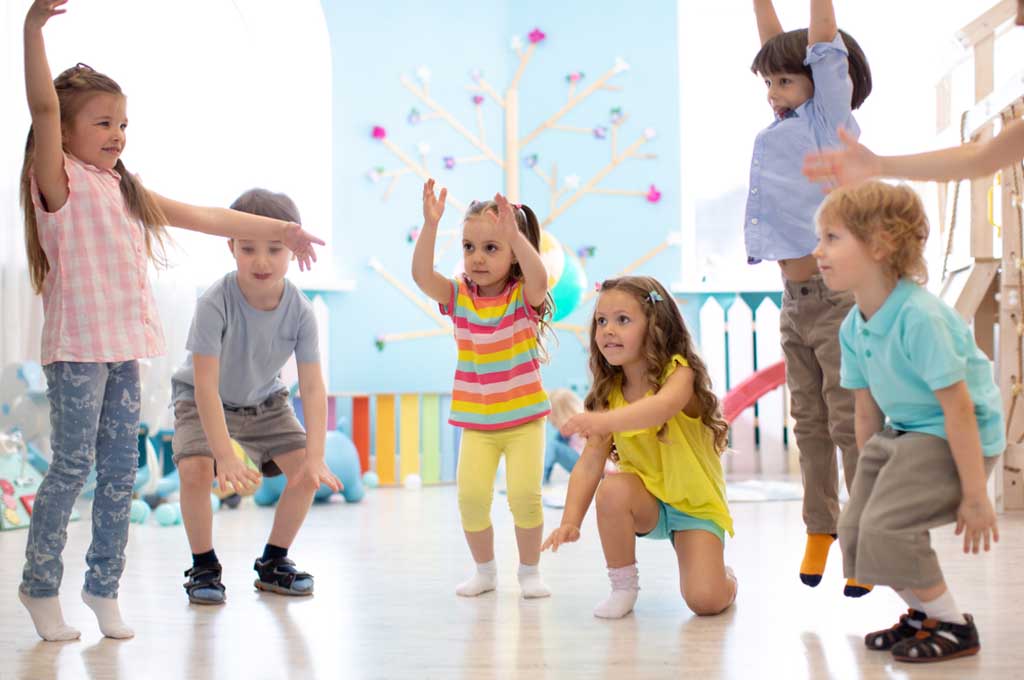When compared to earlier generations, current ones lead a far more sedentary lifestyle not just in Australia but across the globe as well. On average, children in the 5 to 16 age range spend six and a half hours on screens, and this includes playing video games, watching TV, using tablets, computers and mobile phones. In comparison, screen time was only three hours in front of a single screen in 1995.
So what does this simple statistic tell us? Children are increasingly leading far more sedentary lifestyles compared to 20 years ago, just as adults are.
Even up until a decade ago, preschool was all about teaching children how to listen, follow the rules, interact with their peers, and listen. But now, in many preschools, teachers are compelled to spend far more time on structured and regimented academic instruction. Often, this translates to less active free playtime and movement, and more seatwork time.
Recess and physical education classes are typically the first things cut whenever the additional academic time is needed for math skill development and remediation in reading. It means that children are spending excessive amounts of time in sedentary mode. Research has shown that sedentary lifestyles harm cognitive development.
The Impact of a Sedentary Lifestyle in children
A sedentary lifestyle can have many physical and mental impacts. Here we take a look at some of them:
1. Abrupt Mood Changes
It is normal for growing children to experience sudden behavioural changes. This could stem from their inability to share their displeasure or dissatisfaction. Sometimes, it is because they are still learning to express themselves. But sometimes, children experience sudden mood changes because they are unable to release the energy that is pent up inside them.
They sit at school and at home; this can cause anxiety and increase psychological distress. Playing video games watching television and just sitting around with mobile phones in hand can result in depression and anxiety. In the case of very inactive children, these different feelings might be steadily building up inside them without any release.
2. Obesity
Obesity in young children is emerging as a modern-day health problem across the world. A sedentary lifestyle and unhealthy eating habits have resulted in this alarming trend. Many schools try to cram in different types of learning, and this reduces the amount of time that children get for any form of physical activity structured or otherwise. Slowly but surely, children begin to become overweight, which in turn leads to different types of health problems down the track.
3. Weak Brain Function
When it comes to children’s fitness, inactivity can also impact the mind. Inadequate physical exercise can result in weak brain functions. Prolonged sitting affects the flow of ideas to the children’s brains which do not work at full capacity when they are just sitting and listening. It is also why many preschools include interactive learning activities such as fun projects and group work in their curriculum.
No matter which way you look at it, physical activity has a positive effect on human growth and development and provides psychological and physiological benefits. So, does this relationship hold in the opposite direction as well?
An Important Study
Educators across the world have always emphasised the importance of structured physical activity as a crucial component of early childhood education and care or ECEC. Now there is a new study that the University of Canberra Institute for Sport and Exercise‘s Researchers have conducted in conjunction with the Australian College of Physical Literacy.
Their study has confirmed that this aspect is effective in improving key cognitive functions, including impulse control and expressive vocabulary as well as gross motor skills in young children. The experts conducted this randomised control intervention study which was named the AEL (Active Early Learning) project.
They examined whether applying a physical literacy curriculum in tandem with the existing curriculum of early childhood education and care could help improve development outcomes in young children. But that wasn’t the only objective; the study also examined how this new program could be included in existing ones, practically and sustainably, so that families and educators could also learn alongside with the children.
Since every early learning setting will have existing practices and routines, implementing any physical literacy curriculum has to keep these in view. It becomes essential to achieve the right balance between existing studies and activities and new practices.
The Program and How It Works
Modern-day educators of early learning settings have very busy schedules and incorporating any new physical activities for the children has to be done in a structured manner. This program includes:
- Active transactions which include short daily movement experiences and group time which also help in the development of fundamental movement skills.
- Movement experiences that extend into areas of learning including science, numeracy, music, dance and literacy.
- Facilitating free play time that encourages exploration and enhances the confidence of the children.
- In this structured program, the day would include group activity time of about 15 minutes and extension activity of another 15 minutes and regular encouragement of different types of challenging play activity.
- The AEL program results indicated that this approach improved physical literacy, and there were cognitive benefits in various areas as well.
- In the physical aspect, the children showed better motor skill development and were more physically active.
- From a social and psychological viewpoint, the children in this study benefited with expressive vocabulary communication and enhanced self-control.
The acquisition of fundamental motor skills is strongly associated with the overall development of cognitive, social, neuromotor, and emotional aspects in children.
The study proved there was a distinct link between cognitive development and physical literacy by applying the structured physical literacy program fundamentals in early childhood settings. Using this approach is an excellent way to boost the growth of young children and help them better prepare for school and adult life too.
Why Gross Motor Skills Are So Important
Gross motor skills involve the use of the body’s larger muscles which are used to sit up, crawl, roll, walk, hop, skip, jump, leap and more. Regular participation in such physical activities has been linked with improved memory, attention spans and academic performance as well as other essential school day functions. Even a baby’s ability to roll over and sit up unsupported has a significant impact on their ability to learn more about objects.
This relevance becomes stronger as the child grows, moves around and gets more opportunities to learn about their immediate environment and the objects around them. One of the most notable cognitive gains of exercise is how physical activity improves actual brain function by helping in the multiplication of nerve cells, creating, and even more, more connections for learning.
There is a lot of research which indicates that an increase in physical activity has a very positive effect on cognition for preschool children. Being physically fit can also keep your brain sharper for a longer time as you grow older.
How Clovel incorporates More Movement and Physical Activity into a School Day
We at Clovel are always mindful of the latest trends in the field of early learning and education. Our educators are committed to helping children’s minds, and bodies become healthy, which means the focus is on mental and physical development. It’s why we engage our children in the Munch and Move Program because the Move section of the program is focused on developing physical literacy.
There are several ways to incorporate more movement breaks and physical activity into a school day. Just as we focus on structured learning, we make sure that physical-activity-based learning does not suffer. Our educators incorporate moderate physical movement throughout the school day with multiple brain breaks.
We have seen that performing short bouts of exercises such as doing jumping jacks, dancing to music and jumping in place is a great way to incorporate movement with traditional academics. Many multisensory activities increase movement while assisting children in improving academically. We plan activities and learning that help in making dynamic changes to the children’s patterns of physical fitness, cognitive function and health.
Helping Preschoolers Adapt to the New Normal
Clovel has adapted to the new normal very consciously. We have implemented various safety measures to keep children safe while providing the all-round education they need. We want to make sure that the environment and setting at Clovel are safe and conducive to learning.
We are also mindful of the fact that children are still getting used to the new normal and are adjusting to it and we make every effort to help ease the process for them. Our educators are well-trained and highly qualified and pay personal attention to each child.
This approach has helped all the children adjust to these changes and get back to learning and participating in various fun activities just as they did before the pandemic emerged. It’s our way of ensuring that they get the learning and interaction they need to stay occupied, happy, active, healthy and busy during these challenging times.
For any more information, call Clovel Childcare and Early Learning Centre, don’t hesitate to get in touch with us. For any information about our Educational Programs, give us a call at 02 9199 0294 or fill in this contact us form.
Thanks for reading,
Clovel Childcare
1300 863 986












